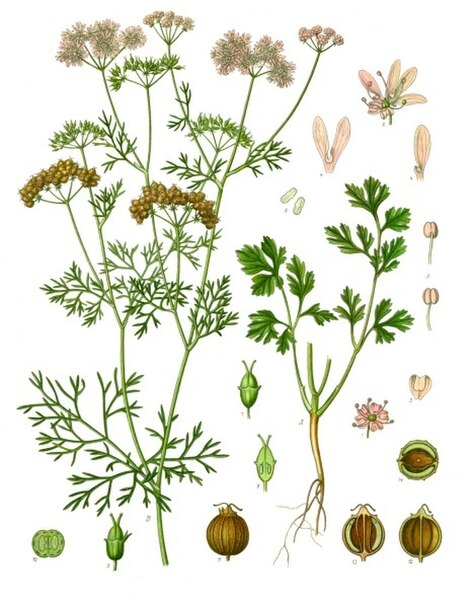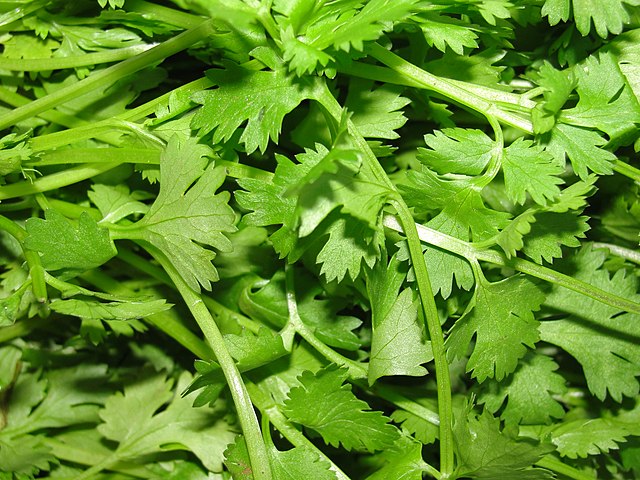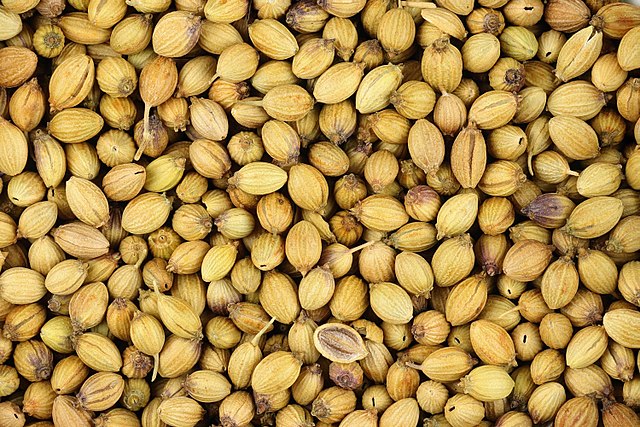Coriander, also known as cilantro and dhaniya, is an annual herb in the family Apiaceae. All parts of the plant are edible, but the fresh leaves and the dried seeds are the parts most traditionally used in cooking.
Coriander
Flowers of Coriandrum sativum
Coriander leaves
Dried coriander fruits are often called "coriander seeds" when used as a spice.
In general use, herbs are a widely distributed and widespread group of plants, excluding vegetables and other plants consumed for macronutrients, with savory or aromatic properties that are used for flavoring and garnishing food, for medicinal purposes, or for fragrances. Culinary use typically distinguishes herbs from spices. Herbs generally refers to the leafy green or flowering parts of a plant, while spices are usually dried and produced from other parts of the plant, including seeds, bark, roots and fruits.
A variety of herbs are visible in this garden, including mint.
Herb garden at Hardwick Hall, Derbyshire, England, originally planted in the 1870s by Lady Louisa Egerton, recreated by the National Trust, largely following the original design.
A bundle of thyme (Thymus)
A traditional Chinese decoction (湯劑/汤剂), using Chinese herbs








